2020 8th International Conference on Power Electronics Systems and Applications
7 – 10 Dec 2020 : Future Mobility and Future Power Transfer
Organizer:



Co-Organizer:
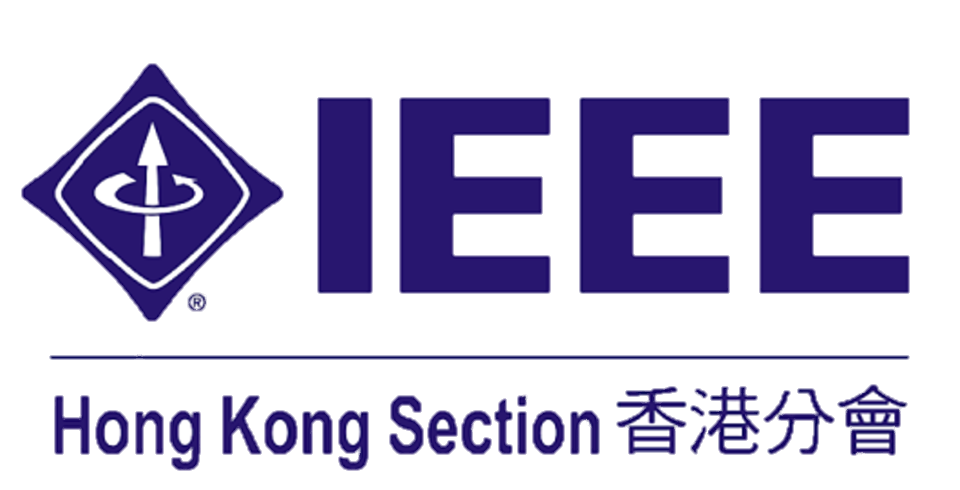




2020 8th International Conference on Power Electronics Systems and Applications7 – 10 Dec 2020 : Future Mobility and Future Power Transfer Organizer:
Co-Organizer:
|
|---|
ARE YOU READY TO CHANGE THE WORLD?
7 – 10 Dec 2020
Dept. of EE, The Hong Kong
Polytechnic University
The 8th International Conference on Power Electronics Systems and Application (PESA) will be held in December 2020 in Hong Kong, China. The conference focuses on the recent research and the industrial projects of power electronics and related technology.
The conference aims to be a key international forum for the exchange and dissemination of technical information on power electronics among academics and practicing engineers in the field.
The coming conference features technical presentations and panel discussion sessions. The technical presentations will be presented by eminent academics, engineers and managers around the world and will cover topics of current interest in the area of static power conversion, machines, drives, traction, devices, simulation, and energy saving. The panel discussion sessions will provide an open forum for exchanging ideas on the recent development, applications and new standards in power electronics.
This year the theme is “Future Mobility and Future Power Transfer”, which aims to explore the near future new energy processing for applications and research in the field. Selected papers will be published in the Asian Power Electronics Journal.
KEYNOTE SPEAKERS |
||||||||
|---|---|---|---|---|---|---|---|---|
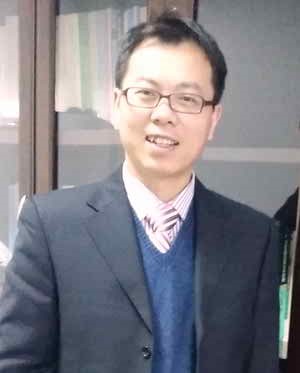 Prof. Wei Xu Design and Control for Linear Induction Machine and Drive System Based on Urban Transportation Urban transportation, e.g. linear metro, driven by linear induction machine (LIM) has been paid much more attention both by academic and industrial communities recently for its direct thrust drive, strong climbing ability, flexible line choice, smaller cross section area, lower noise, etc. However, this system is greatly different with traditional rotary IM due to its cut-open primary (end effect), vertical force resulted from the asymmetric structure, and so on. There exists great difficulty for accurate modelling for LIM influenced by nonlinear circuit and partial magnetic saturation. This speaking will introduce one new reasonable equivalent circuit for LIM performance analysis, as well as some specific design and control case studies. Afterwards, advanced control strategies, like efficiency optimization control, model predictive control, will be employed to further increase the LIM drive indexes, such as average torque, efficiency, etc. Finally, some emerging techniques like system-level optimization on LIM will be discussed. |
 Prof. Loi Lei Lai Smart Mobility under the Smart City Environment Quality of life is an important indicator for smart city development. To achieve a low-carbon economy, with the effort to increase renewables significantly, electric vehicles (EV) becomes the main type of transportation in cities. For example, the electric vehicle market in China has attracted about 18 billion dollars capital. However, huge integration of EVs will pose great challenges to the electricity distribution network stability and efficiency of the transportation systems. This keynote presents methods for charging station site selection, charging schedule scheme and reviews requirements for batteries. Some real-world examples will be given. |
|||||||
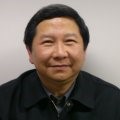 Prof. Danny Sutanto Future Power Grids This speech focuses on a review of the state of the art of future power grids, where new and modern technologies will be integrated into the power distribution grid and will become the future building blocks for electricity generation, transmission and distribution. The current power grids are undergoing an unprecedented transformation from the original design, changing the way how energy has been produced, delivered, and consumed over the past century. This new energy era includes the integration of renewable sources such as wind and solar, supported by distributed or community energy storage, to power distribution grids through innovative high-frequency magnetic links and power electronic converters. The use of emission-free transportation, such as electric vehicles, and energy-efficient technologies, such as superconducting generators and storage systems, are also rapidly emerging and will be integrated into the power grids in the foreseeable future. The energy systems are evolving to provide clean energy to consumers to meet increasing demands from smart appliances to electric vehicles. The connections are also developing among the power infrastructure and non-power infrastructures such as transportation, communication, etc. As these connections evolve, it is necessary to reconsider the current paradigms of system analysis and planning with a focus on how to achieve the most flexible, efficient, and reliable power grid for the future – the one that enables operation in a domain which is very different than the current one to deliver the services to consumers at an affordable cost. |
 Prof. Henry Shu-hung Chung Power Semiconductor Filtering Technology Power electronics has become so pervasive and embedded in our daily lives. Main aims of power electronic systems are to control, convert, and condition electrical power flow from one form to another through the use of solid-state electronics. Regardless of application, a power electronic system or subsystem comprises three key sections: input filter, high-frequency switching network, and output filter. The switching network is the main power processing unit that manipulates power from the input to the output with low power dissipations in the switching devices. The input filter is used to prevent unwanted noise generated by the switching network from getting into the source, and assure compliance with regulatory electromagnetic compatibility standards, while the output filter is used to pass wanted electrical output form and attenuate unwanted noise to the load. Both filters are made up of passive components. As practical switching devices and passive components are non-ideal, major amount of power losses in the system is in the conduction and switching losses of the switching network, and the ohmic and magnetic core losses of the filters. Although recent advances in new and emerging materials, device technologies, and network topologies have resulted in reducing the losses of switching devices and increasing the operating frequency for reducing the filter size, the filter sections still occupy considerable space and constitute a major part of the total power loss. The ever-increasing density of power electronic systems is straining designers’ abilities to squeeze space for the filters without sacrificing performance. However, there have been no significant enhancements in the filter structure and design in today’s power electronic systems, as compared to the conventional approach. The filter section will become a key limiting factor in advancing the power density and performance of the future power electronic systems. The speaker will share a filtering technology, named “Power Semiconductor Filter (PSF)”, as a substitute for passive input filters. He will illustrate how the PSF is applied to different power converters. |
|||||||
 Prof. Pablo Arboleya Flexibility Management in Terminal Distribution Systems as A Way for Increasing the Penetration of EV Chargers and Renewable Energies Twenty years ago, the term Microgrid was introduced as the solution for coordinate different distributed resources in a small portion of the network, most of the times isolated or connected to the grid through a point of common coupling. Since then, many researchers worked on different aspects of this new paradigm, most of them related to the real time coordination and control of the resources. The term Microgrid evolved into the so called SmartGrids. In this case the topological constraints were relaxed considering not only semi-isolated small portions of the grid. We can define a smart grid as an electricity distribution network that can be monitored and operated in real time in some cases in a semi-automatic or in an automatic way. Implicit in the SmartGrid concept we can find other concepts like Demand Response of the Flexibility management. Technological advances made high voltage distribution networks smart in some way but this is not the case of the terminal distribution systems. In recent years, researchers made another “terminology upgrade” introducing the term Transactive Energy. Basically, the term groups a set of economic management techniques that are combined with “traditional” control techniques which allow a holistic management of power systems. In this case, we extend the functionalities of a SmartGrid making it more participative. All agents can take active roles in the network and it is possible the interactions between different levels of the whole power system by means of the so-called Aggregators. |
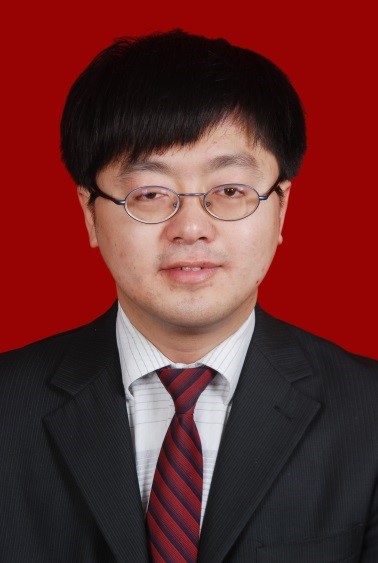 Prof. Xin Dai Clarifying the Relationship between Maximum Power Transfer Capacity and System Efficiency Conditions of Wireless Power Transfer System Maximum Power Transfer is always an important issue for Wireless Power Transfer (WPT) system to make system power transfer capability is fully developed and utilized. And it is usually realized by impedance matching method. Traditionally, impedance matching is implemented by placing a power electronics converter such as Buck converter at the secondary side. However, the impedance matching range of the power converter has not been fully discussed. The power electronics converter and its operation mode will directly influence its impedance matching range. Traditional Buck converter running at CCM mode has a limited impedance matching range. To extend the load matching range, a novel impedance matching method is going to be studied based on switching between CCM and DCM modes. In addition, the impedance conversion range will be analyzed for CCM and DCM running modes, respectively. The influence of mutual coefficient k will be discussed as well. On the basis, a maximum power tracking method will be shared with experimental results that show the impedance matching range can be extended at least two times than the traditional matching method. Overall, several methods and key technologies about “Impedance Matching Range Extension Method for Maximum Power Transfer and Maximum Efficiency” will be given and discussed in this session. |
|||||||
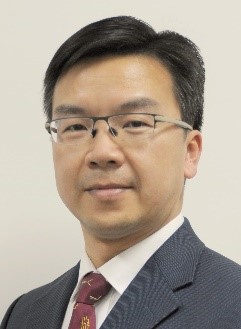 Prof. Jinjun Liu Recent Advances in Small-Signal Modeling of Power Converters and Distributed Power Systems Small-signal modeling is very important to the analysis and control design of electric energy systems. As electric energy systems enter into a new era, they have been experiencing many changes towards future, among which turning into more electronic, i.e. integrating more and more electronic power converters, and incorporating more and more distributed generations are the two major ones. The technical challenges to the small-signal modeling of electric energy systems due to these changes will be discussed in this tutorial, from the view point of the need of both theoretical insights and engineering practices Some of the recent advances in the researches of small-signal modeling will then be illustrated in more details for both single power converters, such as basic DC-DC converters and 3-phase AC-DC converters, as well as distributed power systems, which are composed of a group of power converters connected in either a DC or AC bus and interfacing either energy sources or energy users. Whether, how and in what capacity these newly achieved results have responded to the challenges will be elaborated and commented respectively. The specific issues that the speaker believes are still lacking effective engineering solutions and hopefully would attract more attentions will be identified too. |
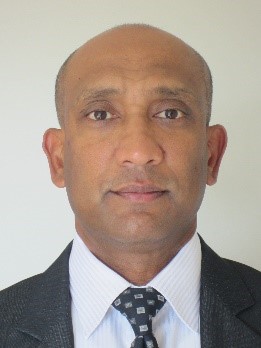 Prof. Udaya K Madawala Wireless Technologies for V2X Applications The penetration rate of Electric vehicles (EVs) into the transport sector is becoming high, as EVs are gaining global acceptance as the means of future transport for sustainable living. Inevitably such high level of penetration will also bring some challenges to the electric power industry. One potential solution of high promise is the vehicle-to-X (V2X) technology that enables EVs to be used as an energy storage to offer services through vehicle-to-home (V2H), vehicle-to-grid (V2G), vehicle-to-building (V2B) and vehicle-to-load (V2L) concepts. For all V2X applications, EVs essentially require a bi-directional power interface either with the electricity network (grid) or load to allow for both storing (charging) and retrieval (discharging) of energy. This can be achieved by both wired and wireless means but the latter, based primarily on Inductive Power Transfer (IPT) technology, is becoming more popular being convenient, safe, and ideal for both stationary and dynamic charging of EVs. The seminar highlights the challenges and future directions of V2X technologies, and presents new modelling and optimal control techniques for WPT systems, discussing the latest advances in bi-directional wireless power transfer (BD-WPT) technology developed for V2X applications. |
|||||||
TUTORIAL SPEAKERS |
||||||||
|---|---|---|---|---|---|---|---|---|
 Prof. Eric Cheng Energy Storage, Fuel Cell and Electric Vehicle Technology The critical components of an Electric Vehicle are the battery and the motor drive. Energy storages such as batteries and super-capacitors are now the major energy storage units. The energy sources like fuel cell, and flow battery are also getting popular and are promising energy storage for future devices. Thanks to the hydrogen economy, the coming new fuel with zero carbon will be a trend. Energy cell packaging is now a new direction. The use of energy cells to integrate with the vehicle body has been reported and suggests good potential for energy management. The energy management and balancing technique is now a necessary component to manage the energy cells. Besides the energy storage and the traction motor and drives, there are numerous motors and actuators used in modern electric vehicles. They ate located in various position of a vehicle to replace the conventional mechanical and hydraulic system. They may include an active suspension system to replace the conventional hydraulic system. The In-wheel motor is based on integrating the motor and wheel into a single unit that increase the power density and presents a real 4-wheel drive. The skid steering can, therefore, be realized. Also, the anti-lock braking (ABS) is an all-electric braking system, and replaces the conventional hydraulic system in ABS. In this tutorial, I will give an extensive overview of the latest electric vehicle technology in energy storage, sources, and part/components that could be used in the present and the future. The talk covers the major advanced components of an electric vehicle and the technology and research related to the development. Finally, I will conclude the tutorial with an outlook on future vehicles. The tutorial is suitable for researchers or engineers with a deep knowledge of electric vehicles and is also suitable for someone who is new to the field. |
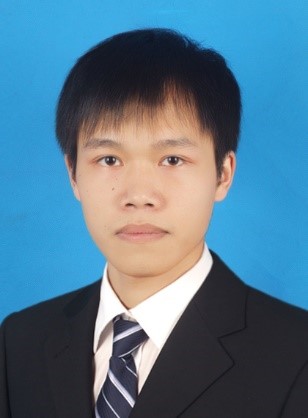 Dr.Zhicong Huang Efficiency Optimization in Wireless Inductive Power Transfer for Electric Vehicle Charging Inductive power transfer (IPT) technology can have both the transmitter and receiver insulated and contactless, and thus shows versatility in wireless electric vehicle (EV) charging under hostile environments where physical connection is inconvenient or impossible. However, it is challenging for an IPT converter to maintaining a high efficiency while complying with the charging profile of the EV battery. This tutorial starts with this challenging issue, followed by an efficiency optimization principle and several methods for good efficiency performance in wireless EV charging. These methods will share ideas of load-independent-transfer characteristics, linear transfer functions, active rectification, active compensation, and so on. A thorough introduction to these methods will be provided with an emphasis on the application of each method for high-efficiency wireless EV charging. This tutorial will touch on the topic of development for efficiency optimization in bidirectional wireless EV charging for future grid-to-vehicle and vehicle-to-grid operations. A summary and conclusions will be drawn towards the end of the tutorial. |
|||||||
 Dr. Xiaofei Li The Parallel Transmission of Power and Data for Wireless Power Transfer Systems For most Wireless Power Transfer (WPT) applications, reliable data communication between primary side and secondary side is usually needed in closed-loop control to improve system performance, e.g., output-voltage feedback control, load monitoring, synchronism, and coordination between the two sides, etc. Generally, conventional wireless communication technologies such as bluetooth, Wi-Fi, and radio frequency link can be used in WPT applications for wireless data transfer, but these technologies need complicated pairing and lead to higher system cost. Recently, research works have shown that data can be transferred on existing power transfer channel. Such parallel transmission of power and data technology is more straightforward and cost effective. In this tutorial, a through introduction (i.e., the topology, the circuit and the characteristic, etc.) of these methods will be provided. Especially, an inductive and capacitive combined parallel transmission method of power and data for WPT systems will be given. At the end of the tutorial, we will summarize and compare all the methods. |
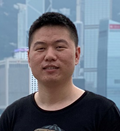 Dr. Yong Li Key Technologies And New Developments Of Stationary/Dynamic Wireless Power Transfer The wireless power transfer (WPT) technology is an attractive method that can deliver power through a large air gap without physical contacts. Such technology has been successfully proved to be an excellent candidate to replace traditional methods. In recent years, WPT has drawn much attention due to its convenience, cleanness, and safety. This technology has been successfully applied to medical implants, mobile phones, electric vehicles, railway applications, etc. However, there are still some critical issues should be addressed to achieve better performances. Key technologies and new developments of stationary/dynamic wireless power transfer, e.g., the realization of multi-output, current-stress optimization, coil design for dynamic wireless power transfer (DWPT) will be introduced in this tutorial. Each technology will be introduced in detail and compared with traditional method to show the feasibility. Finally, conclusions and future work will be concluded. This tutorial is suitable for someone with a basic knowledge of WPT and power electronics. |
|||||||
 Dr. Xiangdang XUE Electric Antilock Braking Systems for Electric Vehicles Antilock braking system (ABS) is one of important components in road vehicles. It provides safe protection and minimizes braking distance. Conventional antilock braking system belongs to the electrohydraulic antilock braking system, which mainly consists of the electrohydraulic brakes and the ABS algorithm. This tutorial focuses on the electric antilock braking system for electric vehicles (EVs), which mainly includes the electromechanical brakes (EMBs) and the ABS algorithm. The organization of this talk is summarized as follows. Firstly, the fundamental of automotive antilock braking systems and the schematic structures of the electrohydraulic ABS and electric ABS are introduced. Next, the fundamentals of the electrohydraulic brake and the electromechanical brake are described. Furthermore, the status of the research on electromechanical brakes is investigated, and various topologies of electromechanical brakes are evaluated according to the performance and practicability. Then, the case study of an electromechanical brake is discussed. After that, the objectives of ABS methods or algorithms are discussed. In addition, the status of the research on ABS methodologies is studied, and the cited ABS methods are evaluated according to the performance and practicability. Finally, the case study of an ABS method is presented. Therefore, this tutorial presents the comprehensive overview of electric antilock braking systems for electric vehicles. |
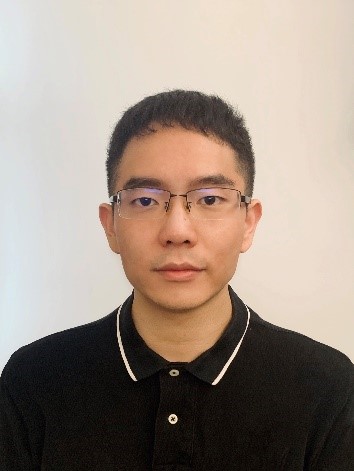 Dr.Yun Yang Development of Front-End Monitoring of Mutual Coupling and Load Conditions in Wireless Power Transfer Systems Recent advancements of series-series (SS)-compensated wireless power transfer (WPT) technology have enabled its wide-spread applications in battery charging of portable devices, electric vehicles (EV), and medical implants. A conventional SS-compensated WPT system consists of an inverter at the transmitter side to maximize the overall system efficiency typically by phase control or frequency control, and a DC-DC converter at the receiver side to regulate the charging current and voltage of the battery load. However, the efficiency and dynamic response of the conventional WPT system is limited by the DC-DC converter in point-of-load applications. The concept of maximum energy efficiency tracking (MEET) sparked off more related studies. Fast control strategies for MEET strategies are subsequently investigated, which normally require feedback signals from the receiver to the transmitter via a wireless communication system to calculate the coupling coefficient or correlated variables. The additional wireless communication system increases the volume and cost of the system. To this end, front-end monitoring strategies are proposed by monitoring the mutual coupling coefficient and load conditions of SS-compensated WPT systems without an extra wireless communication system. This tutorial will follow the roadmap of the front-end monitoring strategies that have been developed by the Wireless Power Research Group from the University of Hong Kong so far. Conclusions and future works will be drawn towards the end of the tutorial. |
|||||||
 Dr.Xing Zhao Emerging Reluctance Motor Drives for Electric Vehicles Traditional rare-earth PM synchronous motors have been widely adopted for electric vehicle propulsion due to high torque density and high efficiency. However, the rare-earth material is a nonrenewable source and the price is high and fluctuating with supply status. Therefore, how to reduce the rare-earth material in electric motors while maintaining the vehicle driving performance becomes an important research topic. Reluctance motors are potential solutions. This tutorial will first provide a review for the emerging reluctance motor drives for electric vehicles, including different synchronous reluctance motors, switched reluctance motors, doubly-fed doubly salient motors, variable flux reluctance motors, etc. The technology status and development trends for the existing solutions will be comparatively studied. Further, a new family of flux-modulated reluctance motors will be introduced. The proposed solution incorporates the flux modulation principle into reluctance motor designs, which contributes to improved torque density and efficiency and thus exhibit good potential for electric vehicles. The motor topologies, operation principles, electromagnetic analysis, and advanced control methods will be comprehensively presented. Finally, some prospects will be provided for future research and development of reluctance motor drives for electric vehicles. |
 Dr.Hui Yang Novel Variable-Flux Electrical Machines for Transportation Electrification: State-of-Art and Future Frontiers This tutorial will point out the current challenges of the existing permanent magnet (PM) machines for electric vehicle applications first, and then introduce research developments of newly emerged variable-flux (VF) electrical machines by combing the advantages of constant PM flux and VF machines. This tutorial will propose a new “PM+X” concept by applying additional field excitation, winding reconfiguration, mechanical adjuster, special rotor design and VF magnet to the conventional PM machines. In addition, the topology features, working principle and control methods of several new VF electrical machines will be addressed, respectively. Finally, some future frontiers of VF electrical machines and drives, as well as their potential applications for automotive traction will be discussed. |
 Dr.Minghao Wong Towards Efficient, Reliable and Economic Lithium-ion Battery Energy Storage Systems Lithium-ion (Li-ion) battery energy storage system (BESS), which distinguishes itself from other conventional BESS with superior power and energy performances, has been widely applied in power systems to balance generation and demand. However, its high cost is generally recognized as the bottleneck for the large scale implementation. Since the difficulties of developing inexpensive and long-lived materials for the next-generation Li-ion batteries remain hovering, the enhancement of battery lifespan for cost reduction via the optimized operations of batteries is attracting more and more attention. In the grid-interfacing operations, it is found that the high current intensity, extreme states of charge and high temperature will accelerate the degradation of batteries. To achieve the optimal operation of batteries, both the hardware- and software-based technologies have been proposed to alleviate the operational stresses imposed by the required grid services. In this tutorial, originated from the operating principles of Li-ion BESS, the development of BESS will be reviewed. The degradation mechanism, modelling methodology of battery packs, configuration and control methods of BESS will be covered. |
 Dr. Ying Huang Emerging Non-Isolated High-Power-Density DC/DC Converters with High Conversion Ratios With the growing concern for the environment, applications such as electric vehicles, grid-connected systems for renewable energy generation, and energy harvesting systems are emerging. Such applications drive the growing demand for unidirectional/bidirectional DC/DC converters with high conversion ratios, with the desirable features of high-power-density, high efficiency, low cost, and high reliability. Based on the types of components and configuration utilized, possible solutions for DC/DC converters with high conversion ratio can be classified into four categories: transformer-based converters, coupled-inductor based converters, switched-capacitor (SC) converters, and inductor-based converters (converters that contain inductors). For applications where isolation is imperative (i.e., the front-end DC/DC converter for fuel cell with over 60 V output voltage, and the DC/DC converter between low voltage and high voltage level systems in EV, etc.), transformer-based converters are the most suitable solutions. However, for other applications, employing transformer-less converters will be a more appropriate solution due to its reduced cost. Firstly, this tutorial will provide a review for the DC/DC converters with high conversion ratios and their applications. The advantages and limitations of different types of converters will also be discussed. Secondly, a new family of high-power-density resonant converters and switched-capacitor converters suitable for high voltage gain applications will be presented. Finally, conclusions and future development trends will be drawn. |
|||||
Paper submission |
||||||||
|---|---|---|---|---|---|---|---|---|
|
||||||||




